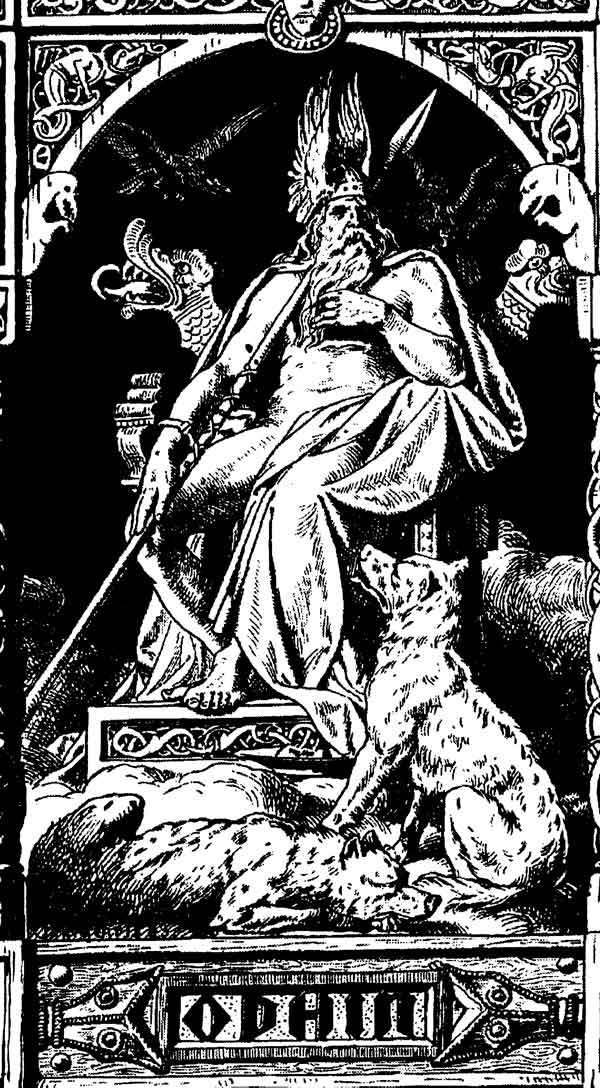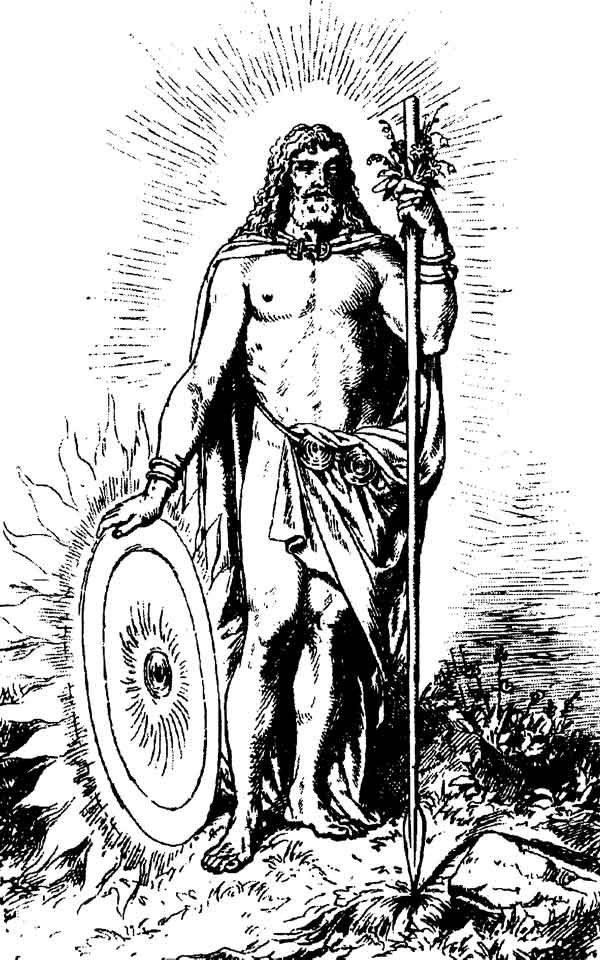First Japheth, than Odin
Hyperborea: The Land of the Æsir
In this treatise we want to look at a culture whose elevated rank when compared to Sumer (Mesopotamia), Hatti (today’s Anatolia), Magan (Egypt) and Hellas (Greece) will surprise many readers. For it is the Jutland peninsula in northern Schleswig-Holstein, the rural ambience conveys to the superficial look hardly any indication for the existence of an ancient culture of high standing. But this impression is misleading as we will soon see.
Legendary Hyperborea often serenaded by Greek poets – that today is Jutland. Near the Danish boarder – near Schleswig – rises that history-charged hill that erstwhile carried a fortress: Haithabu (high castle), the residence of the Wane Japheth, built about 5’000 years ago. About 800 years later Japheth was forcibly deposed by his brother Ham who – as the highest of the Æsir – carried the name Odin. Odin’s fortress Asgard was on a land ridge sunk today, the “Steingrund” (stone ground) that went from the island of Heligoland until the mouth of the Eider.
After intensive research we identify Odin as the biblical Ham and the Greek Cronus.

Odin, sovereign of the Æsir after about 2200 BC
Odin is identical with Cronus alias Ham (Art Nouveau representation).
Odin lost his life during Ragnarök around 1220 BC
With his wife Frigg (Rhea) he sired his famous son Baldr, who was known all over Europe as Zeus, Tiu or Djews, in the Near East as Baal and in India as Indra. Thor is descended from a liaison of Odin with Fjörgun (Jörd), and with her husband Baldr Nanna bore Forseti from whom the future Frisians got their name.
Nanna in turn was a daughter of Nep, the later Neptune, who was none other than Nebo (Nabu), the famous son of the Sumerian Marduk whom we know as the Egyptian Re and have identified as the father of Noah.
The identities behind the aliases point to Forseti, the son of Baldr, being identical with the divine blacksmith Hephaestus, the son of Baal Zeus. In the Near East Hephaestus carried the name Kotar-Hasis (Kusharu-Chasisu).
What Do the Ancient Geographers Tell?
The people settled here before, called by the Egyptians Haunebu, were around 2400 BC already the exclusive suppliers of amber from the Wadden Sea for the Pharaohs. At the time of Thutmosis III. – around 1500 BC – emissaries from the Haunebu brought the Pharaoh 8943 pounds of amber.
The coveted material called Electron was literally weighed with gold and carried by ship across the Atlantic or delivered via one of the so-called “amber roads” through the European mainland to the Mediterranean.
Around 350 BC Pytheas of Massilia visited the island of Basileia. The main work of Pytheas, On the Ocean, today is missing, but it had served for many an ancient geographer as a gladly quoted source.
According to Pytheas the island Basileia, that he also called Abalus (apple island) and Elektris (amber island), was situated “in the Wadden Sea, a day’s trip from the coast”. In front of the island a rock “with many kinds of cliffs” rose up upon which Hephaestus, the divine blacksmith, had his workshops. Near the island of Basileia the amber river Eridanos flowed into the sea.
Following Diodor, who described the island 2’000 years ago, the “amber island” was in the Wadden sea,“towards the ocean”.
Strabo, a Roman contemporary of Diodor, says that the Watt “is neither land nor sea nor air all by themselves, but rather a mixture of them all, it is like the lung of the sea and is neither walkable nor trafficable.”
Pytheas described the inhabitants of Basileia as Hyperboreans or Phaiakians.
Hecataeus determined the position of the “land of the Hyperboreans” on the “Atlantic sea opposite the land of the Celts (Gauls)”.
Damastes – a contemporary of Herodotus around 450 BC – gave the following localisation for Hyperborea: “beyond the Ripaeas” – the Alps – “from whence Boreas blows, on the outermost ocean, the Hyperborean live.”

Baldr (Baal-Zeus), son of Odin,
was killed around 1225 BC by his brother Hödr
One hundred years before Damastes, Aristeas wrote: “The Hyperboreans live in the farthest north on the coast of the ocean.”
The Roman scholar Mela Pomponius noted around the year 50 AD: “If one navigates” – starting from Britannia – “along the northern ocean” – the North Sea – “in the direction of Asia, one first encounters the land of the Hyperboreans.”
And Pliny the Elder (22–79 AD) delivers a absolutely certain geographic marking: “The ninth arc goes through Britannia and the land of the Hyperboreans, there the longest day has seventeen hours.”
This is still the case today for Helgoland (54° 1’ N) and central Jutland.
The Islandic Eddas, a collection compiled by Snorri Sturluson around 1220 AD of Skaldic rune texts of a high literary quality offer details that are quite unequivocal.
Here we read of that island (holmr) “where the Æsir mix the sword dew with Surtr”. East of Asgards, the seat of the Æsir, “a river rolls through Eitrdala … Slidr is its name” (Völuspá: “The Prediction of the Prophetess”, quoted from Jürgen Spanuth).
The Nordic traditions know twelve sacred rivers, among them Slidr and Hridr.
Also to the east of the island, on the mainland, “an old woman lives in Járnviðr (iron-wood)”.
In the “Germanische Götterlehre” (Germanic Mythology of the Gods), published by Ulf Diederichs, it is said: “A special area within Jötunheimr is the Iron-wood (Járnviðr), and on its borders the giant Eggdir is keeping watch.”
Jötunheimr was the realm of the giants and was to the east and northeast of the fortress Asgard.
This post is also available in: German
